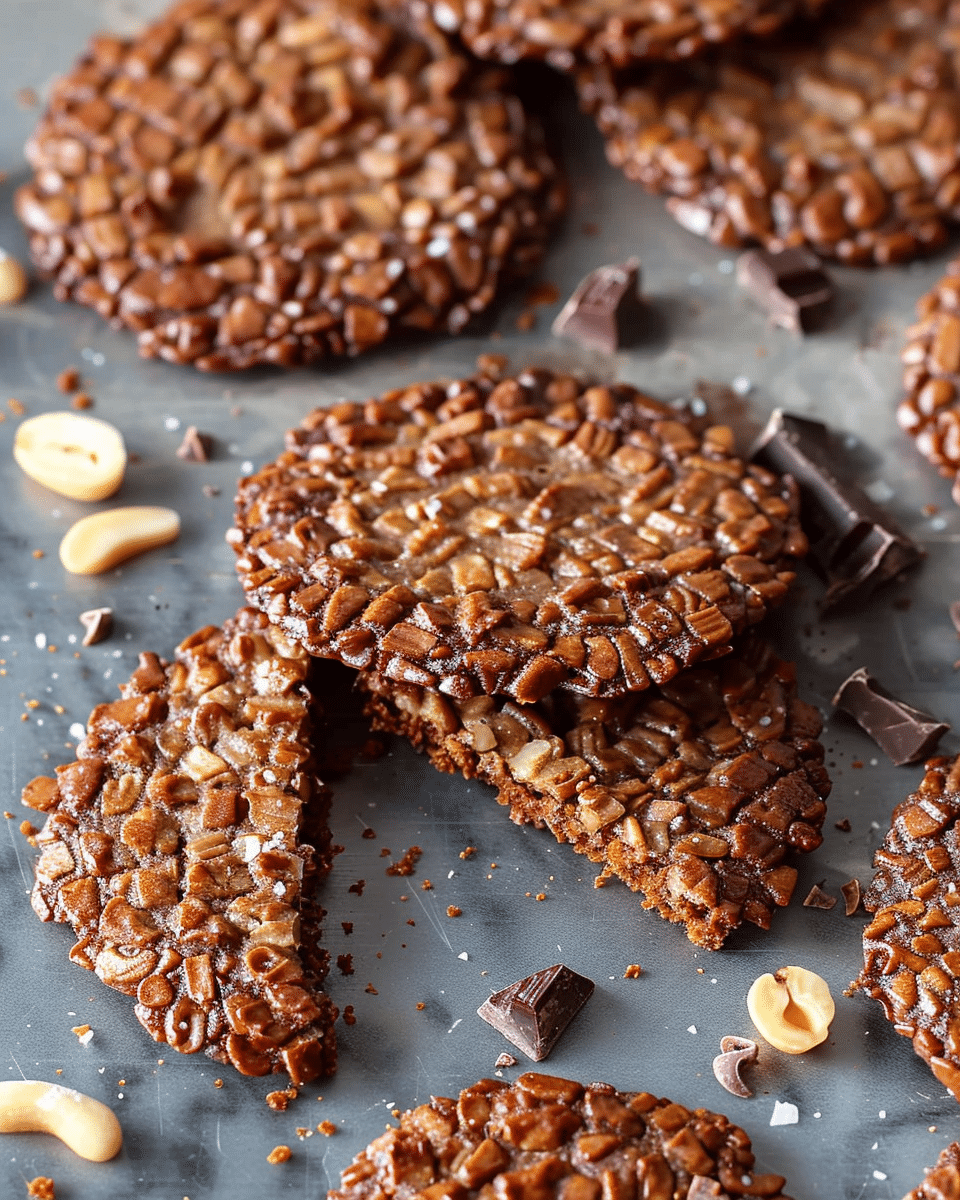Blackened chicken tenders are a soulful and delightful dish that has captured the hearts of many food enthusiasts. Originating from the Cajun cuisine, this dish is known for its bold flavors and the unique blackening technique used to cook the chicken. The chicken tenders are coated in a rich blend of spices and herbs, then cooked in a hot skillet to create a crispy and flavorful crust. This cooking method not only seals in the juices but also imparts a smoky and spicy flavor, making it a hit among those who enjoy a bit of heat in their food. In this article, we will delve into the world of blackened chicken tenders, exploring its origins, cooking techniques, and everything in between.
Essential Ingredients for Blackened Chicken Tenders
When it comes to making blackened chicken tenders, the ingredients you choose play a pivotal role in determining the outcome of your dish. The right blend of spices and quality of chicken can transform this meal into a culinary masterpiece. Here, we’ll delve into the essential ingredients needed to create the perfect blackened chicken tenders.
List of Ingredients
First and foremost, you will need fresh and tender chicken pieces. Chicken tenders are the best choice for this dish as they provide the perfect size and texture. However, feel free to use boneless chicken breasts if tenders are not available; just ensure to cut them into strips for the best result.
Next on the list are the spices. You’ll need a variety of spices to create the signature blackening rub. This includes paprika for a bit of color and warmth, cayenne pepper for that spicy kick, onion powder, and garlic powder for a robust flavor profile. Additionally, incorporate thyme and oregano for a herby touch, and don’t forget the salt to enhance all these flavors.
Moreover, you’ll need a good quality oil for cooking. Olive oil or vegetable oil works well as they have a high smoke point, ensuring your chicken cooks perfectly without the oil burning.
Substitutes and Variations
Now, let’s talk about customization and alternatives. Not everyone’s palate is the same, and that’s perfectly fine. If cayenne pepper is too spicy for you, consider using a milder chili powder or even paprika for a subtle heat.
In terms of variations, the world is your oyster. Feel free to add or subtract spices according to your preference. Some people like to add a bit of brown sugar for a sweet and spicy contrast, while others might throw in some cumin for an earthy depth.
Step-by-Step Cooking Guide
Cooking blackened chicken tenders is an art, and like any art form, it requires patience, precision, and a passion for flavors. Below is a comprehensive guide to help you through the process, ensuring that each bite is as flavorful and juicy as the last.
Preparing the Chicken
- Start with Quality Chicken: Select fresh and tender chicken pieces. Chicken tenders are ideal, but you can also use boneless chicken breasts cut into strips.
- Clean and Pat Dry: Rinse the chicken pieces under cold water and then pat them dry with a paper towel. This ensures that the spice rub adheres well to the chicken.
Making the Spice Rub
- Gather Your Spices: Assemble all the spices needed for the blackening rub. This includes paprika, cayenne pepper, onion powder, garlic powder, thyme, oregano, and salt.
- Mix the Spices: In a bowl, mix all the spices together until well combined. Ensure there are no lumps and that the mixture is uniform.
Applying the Spice Rub
- Generously Season the Chicken: Take the spice rub and liberally apply it to all sides of the chicken tenders. Make sure each piece is well-coated.
- Let it Marinate: Allow the chicken to marinate for at least 15-30 minutes. This helps the flavors to penetrate and enhances the overall taste of the dish.
Cooking the Chicken
- Heat the Oil: In a skillet, heat a good amount of oil over medium-high heat. You want the oil to be hot, but not smoking.
- Cook the Chicken: Place the chicken tenders in the skillet, ensuring they are not overcrowded. Cook for 2-3 minutes on each side or until the outside is crisp and the inside is cooked through.
- Check for Doneness: Ensure the chicken is fully cooked by checking the internal temperature with a meat thermometer. It should read 165°F (74°C).
Serving the Chicken
- Let it Rest: Once cooked, remove the chicken from the skillet and let it rest for a few minutes. This allows the juices to redistribute, ensuring each bite is juicy.
- Serve and Enjoy: Your blackened chicken tenders are now ready to be served. Pair them with your favorite sides and enjoy the fruits of your labor!
Nutritional Benefits

When it comes to savoring blackened chicken tenders, you’re not just indulging in a burst of flavors; you’re also treating your body to a variety of nutritional benefits. Let’s delve into the nitty-gritty of what makes this dish a wholesome choice.
Macro and Micro Nutrients
Firstly, chicken is an excellent source of lean protein, crucial for muscle building and repair. A single serving of blackened chicken tenders can provide a significant portion of your daily protein needs. Besides protein, chicken is also rich in essential vitamins and minerals, including B vitamins (B6, niacin, and riboflavin), phosphorus, and selenium. These nutrients play a vital role in energy production, maintaining healthy bones, and supporting the immune system.
The spices used in the blackening rub are not just there for flavor; they come with their own set of nutritional perks. For instance, paprika is high in antioxidants, garlic powder has been linked to reduced blood pressure levels, and cayenne pepper can boost metabolism. When combined, these spices contribute to the overall nutritional profile of the dish.
Dietary Considerations
Now, let’s transition into considering dietary needs. For those watching their calorie intake, blackened chicken tenders can be a smart choice. Since the chicken is seared and not deep-fried, it has a lower fat content than other cooking methods might produce. However, it’s crucial to be mindful of the oil used in the cooking process, as this can quickly add extra calories.
In terms of macronutrient balance, this dish is low in carbohydrates, making it a suitable option for those following low-carb or ketogenic diets. The high protein content can also be satiating, helping to curb hunger and promote feelings of fullness.
It’s worth noting that while blackened chicken tenders offer several nutritional benefits, moderation is key. The spice rub can be high in sodium, which could be a concern for those monitoring their salt intake. Opting for low-sodium alternatives or adjusting the recipe to your dietary needs can help make this dish a healthier choice.
Explore: 3 Main Types of Chickens Explained
Serving Suggestions for Blackened Chicken Tenders
Blackened chicken tenders are a versatile and delicious option that can be enjoyed in numerous ways. The key is to pair them with sides and sauces that complement their rich and spicy flavor profile. Here, we will explore some mouth-watering serving suggestions to elevate your blackened chicken tenders experience.
Perfect Side Dishes
When it comes to side dishes, you want something that will balance out the heat and spice of the blackened chicken tenders. A creamy coleslaw or a refreshing cucumber salad can provide a cool contrast, while roasted vegetables or a sweet potato mash can add a touch of sweetness to the meal. For a low-carb option, consider serving the tenders over a bed of zucchini noodles or cauliflower rice.
Dipping Sauces
A good sauce can take your blackened chicken tenders to the next level. Classic options like ranch or blue cheese dressing work well, as their creaminess helps to tame the spice. For something a bit different, try a honey mustard sauce or a homemade lime crema. If you prefer to keep the heat, a spicy aioli or hot sauce could be the perfect accompaniment.
Sandwiches and Wraps
Transform your blackened chicken tenders into a hearty meal by serving them in a sandwich or wrap. A crusty baguette or a soft tortilla can be filled with the tenders, along with fresh vegetables, cheese, and your sauce of choice. This option is perfect for a quick and satisfying lunch or dinner.
Salads
If you’re looking for a lighter option, consider chopping up the blackened chicken tenders and tossing them into a salad. They pair well with crisp greens, fresh vegetables, and a tangy vinaigrette. Add some crumbled feta or goat cheese for an extra layer of flavor.
Grain Bowls
Create a balanced and nutritious meal by serving your blackened chicken tenders in a grain bowl. Start with a base of cooked quinoa, rice, or farro, and top with the tenders, roasted vegetables, fresh greens, and a drizzle of your favorite sauce. This option is not only delicious but also customizable based on what you have on hand.
Related:
- Unraveling the Mystery: Who Invented Fried Chicken?
- How Does Ina Garten Cook Turkey?
- Barefoot Contessa Turkey Burger Recipe
Storage and Reheating
Blackened chicken tenders are a delicious treat, but what do you do with the leftovers? Proper storage and reheating are crucial to maintaining the flavor and texture of the chicken. Follow these guidelines to ensure your blackened chicken tenders remain just as mouthwatering as when they were first cooked.
Storing Blackened Chicken Tenders
- Cool Down: Before storing, allow the chicken tenders to cool down to room temperature. However, don’t leave them out for more than two hours to prevent bacteria growth.
- Use Airtight Containers: Place the chicken tenders in airtight containers. This helps to preserve their freshness and prevents them from absorbing odors from other foods in your refrigerator.
- Refrigerate Promptly: Store the airtight containers in the refrigerator as soon as possible. The chicken tenders will stay fresh for up to three to four days when refrigerated at 40°F (4°C) or below.
- Freezing for Longer Shelf Life: If you want to store the chicken tenders for an extended period, you can freeze them. Wrap the tenders tightly in aluminum foil or plastic wrap and place them in a freezer bag. They can be frozen for up to four months.
Reheating Blackened Chicken Tenders
- Thaw If Frozen: If the chicken tenders are frozen, allow them to thaw in the refrigerator overnight before reheating.
- Oven Reheating: Preheat your oven to 375°F (190°C). Place the chicken tenders on a baking sheet and cover them with foil to prevent drying. Reheat for 10-15 minutes or until heated through.
- Microwave Reheating: If you’re in a hurry, you can use a microwave. Place the chicken tenders on a microwave-safe plate and cover them with a microwave-safe lid or wrap. Reheat on high for 1-2 minutes, checking periodically to ensure they are heating evenly.
- Stovetop Reheating: For a crispier texture, reheat the chicken tenders on the stovetop. Heat a bit of oil in a skillet over medium heat. Add the chicken tenders and cook for 2-3 minutes on each side, or until heated through and crispy.
By following these storage and reheating guidelines, you can ensure that your blackened chicken tenders remain as savory and succulent as when they were first made. Enjoy your meal prep journey and never let a single tender go to waste!
Common Mistakes to Avoid When Cooking Blackened Chicken Tenders

Preparing blackened chicken tenders is a culinary journey that promises a flavorful and satisfying meal. However, there are common pitfalls that can turn this delicious dish into a less-than-ideal experience. Let’s explore these potential mistakes and learn how to avoid them to ensure your blackened chicken tenders are cooked to perfection.
Overcooking the Chicken
One of the most frequent errors in preparing blackened chicken tenders is overcooking the meat. Chicken tenders are relatively thin and cook quickly, making it easy to overshoot the ideal internal temperature. Overcooked chicken can become dry and tough, detracting from the overall enjoyment of the dish. To avoid this, use a meat thermometer and aim for an internal temperature of 165°F (74°C). Pay attention to the cooking time and adjust the heat as needed to prevent burning.
Underestimating the Spice
The blackening seasoning is meant to be bold and spicy, but it’s important to strike the right balance. Using too much seasoning can result in a dish that’s overwhelmingly hot, masking the other flavors and potentially making it unpalatable for some. To avoid this mistake, start with a moderate amount of seasoning and adjust to taste. Remember, you can always add more, but you can’t take it away once it’s on the chicken.
Skimping on the Preheating
Achieving the signature crust of blackened chicken tenders requires a hot pan. Failing to preheat your skillet adequately can result in uneven cooking and a lack of that delicious, crispy exterior. To avoid this, make sure your pan is well-heated before adding the chicken. You should hear a sizzle when the meat hits the pan.
Neglecting to Rest the Chicken
Like all cooked meats, chicken tenders benefit from a few minutes of rest time before serving. This allows the juices to redistribute throughout the meat, ensuring a juicy and flavorful bite. Avoid the temptation to cut into the chicken immediately after cooking; instead, let it rest for at least five minutes.
Using the Wrong Type of Pan
The type of pan you use can significantly impact the outcome of your blackened chicken tenders. A cast-iron skillet is ideal for this cooking method, as it retains heat well and distributes it evenly across the surface of the meat. Avoid using non-stick pans, as they may not be able to handle the high heat required for blackening.
Forgetting About Ventilation
The process of blackening chicken tenders produces a significant amount of smoke. Without proper ventilation, your kitchen can quickly become smoky, setting off smoke alarms and creating an unpleasant cooking environment. To avoid this, make sure your kitchen is well-ventilated, turn on the exhaust fan, and consider opening a window if necessary.
Tips for Perfect Blackened Chicken Tenders
Crafting the perfect blackened chicken tenders is an art that requires attention to detail, precision, and a bit of culinary flair. Whether you’re a seasoned chef or a home cook looking to spice up your dinner routine, these tips will guide you to creating a dish that is flavorful, juicy, and impeccably seasoned.
Selecting Quality Chicken
The foundation of any great dish starts with high-quality ingredients. For blackened chicken tenders, opt for fresh, organic chicken tenders. Ensure they are of uniform size for even cooking and trim any excess fat or sinew. This initial step is crucial for achieving a tender and succulent final product.
Mastering the Blackening Seasoning
The soul of blackened chicken lies in its bold and spicy seasoning. Create your own blend using fresh, high-quality spices. Typical ingredients include paprika, cayenne pepper, onion powder, thyme, and oregano. Adjust the level of heat to suit your preference, but don’t be afraid to be generous with the seasoning; it should fully coat the chicken for the best flavor.
Preheating is Key
Blackened chicken requires a blazing hot pan to achieve that signature charred crust. Use a cast-iron skillet for its superior heat retention and make sure it’s smoking hot before adding the chicken. This ensures a quick sear, sealing in the juices and creating a deliciously crispy exterior.
Do Not Overcrowd the Pan
When cooking your chicken tenders, avoid overcrowding the pan. Each piece of chicken should have ample space to ensure even cooking and to allow the spices to form a crust. Cooking in batches may be necessary, but it’s a small price to pay for perfectly cooked tenders.
Let the Chicken Cook Undisturbed
Resist the urge to move the chicken around the pan once it’s cooking. Let each tender cook undisturbed for 2-3 minutes on each side. This patience is rewarded with a flavorful and crispy crust that is the hallmark of blackened chicken.
Don’t Forget to Rest
After cooking, let the chicken rest for a few minutes before slicing. This allows the juices to redistribute throughout the meat, resulting in a juicier and more flavorful bite.
Serve with Complementary Sides
Pair your blackened chicken tenders with sides that complement their rich and spicy flavor. Cool, creamy dishes like coleslaw or a cucumber salad can provide a refreshing contrast, while a side of cornbread can add a touch of sweetness.
Experiment with Dipping Sauces
While blackened chicken tenders are delicious on their own, a dipping sauce can add an extra dimension of flavor. Experiment with different sauces such as ranch, honey mustard, or a spicy aioli to find your perfect match.
Practice Makes Perfect
Like any culinary endeavor, perfecting blackened chicken tenders may take a few tries. Don’t be discouraged if your first batch isn’t perfect. Take note of what worked and what didn’t, and adjust your technique accordingly.
Enjoy the Process
Remember, cooking is as much about the journey as it is about the destination. Enjoy the process of crafting your blackened chicken tenders, experimenting with flavors, and refining your technique. With each batch, you’ll come closer to mastering this flavorful and satisfying dish.
FAQs
What does blackened chicken tenders mean?
Blackened chicken tenders are coated in a mixture of spices and cooked until a crispy, dark crust forms, creating a savory and slightly spicy flavor profile.
Are blackened tenders healthy?
Yes, blackened chicken tenders can be healthy, especially when made with lean chicken and minimal oil. However, it depends on the preparation and portion size.
Can you blacken without butter?
Yes, you can blacken chicken tenders without butter by using alternative oils or cooking sprays to adhere the seasoning mix to the chicken.
Does blackened mean spicy?
Blackened seasoning typically includes spicy elements like cayenne pepper, but the level of spice can be adjusted according to personal preference.
Does blackened mean fried?
No, blackened chicken is not necessarily fried. It is often cooked in a skillet, but the cooking method doesn’t require deep frying.
What culture is blackened chicken?
Blackened chicken originates from Cajun and Creole cuisine, which are traditional styles of cooking from the Louisiana region in the United States.
Conclusion
Embarking on the culinary adventure of making blackened chicken tenders is a rewarding experience, filled with rich flavors and delightful textures. From choosing the right ingredients, to mastering the art of seasoning and cooking, each step contributes to the final, delectable result.
The key to perfecting this dish lies in the balance of spices, the quality of the chicken, and the precision in cooking. When these elements align, the result is a plate of blackened chicken tenders that are crispy on the outside, tender on the inside, and bursting with bold, savory flavors.
Additionally, the knowledge of proper storage and reheating techniques ensures that not a single tender goes to waste, allowing you to savor the flavors even on the next day. It’s a testament to the versatility and lasting appeal of this beloved dish.
In conclusion, blackened chicken tenders are not just a meal, but an experience — a chance to explore the depths of flavor and celebrate the joys of cooking. Whether you’re a seasoned chef or a home cook, this dish provides a canvas for culinary creativity and a chance to create something truly special. So, embrace the journey, enjoy the process, and most importantly, savor every bite.
📖 Recipe
Print
Blackened Chicken Tenders
- Total Time: 20 minutes
- Yield: 4 servings
- Diet: Gluten Free
Description
Indulge in the spicy and savory flavors of Blackened Chicken Tenders! These tenders are coated in a bold spice blend and cooked to perfection, resulting in a crispy exterior and juicy interior. Perfect for a quick dinner or a flavorful protein addition to your meal.
Ingredients
1 lb chicken tenders
2 tbsp olive oil
One tbsp paprika
1 tsp onion powder
A single tsp garlic powder
One tsp dried thyme
1 tsp dried oregano
1/2 tsp cayenne pepper (adjust to taste)
1/2 tsp black pepper
Half tsp salt
Instructions
- Preheat a skillet over medium-high heat and add the olive oil.
- In a small bowl, combine paprika, onion powder, garlic powder, dried thyme, dried oregano, cayenne pepper, black pepper, and salt.
- Coat the chicken tenders evenly with the spice mixture.
- Place the chicken tenders in the skillet and cook for 3-4 minutes on each side or until the internal temperature reaches 165°F (74°C).
- Remove from skillet and let rest for a few minutes before serving.
Notes
Adjust the amount of cayenne pepper to increase or decrease the heat level according to your preference.
Serve with a side of vegetables or a dipping sauce of your choice.
- Prep Time: 10 minutes
- Cook Time: 10 minutes
- Category: Dinner
- Method: Sautéing
- Cuisine: American
Nutrition
- Serving Size: 4
- Calories: 180 kcal
- Sugar: 0g
- Sodium: 500mg
- Fat: 7g
- Saturated Fat: 1.5g
- Unsaturated Fat: 4g
- Trans Fat: 0g
- Carbohydrates: 2g
- Fiber: 1g
- Protein: 26g
- Cholesterol: 65mg









